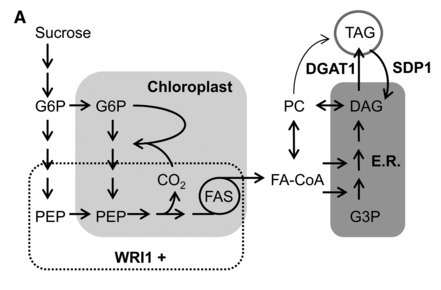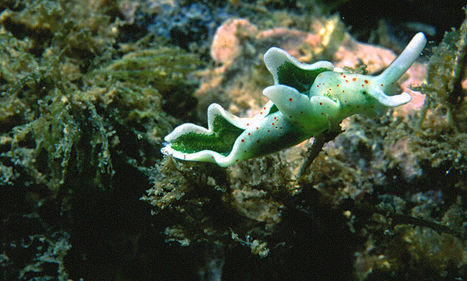 Your new post is loading...
 Your new post is loading...

|
Rescooped by
Loïc Lepiniec
from Ag Biotech News
May 28, 2014 2:26 AM
|
[updated 12 April, 2014] These days I received an apparently easy request: “Do you have any recommendations for reading about the debate on GMOs? I think there is a lot of heat, but too little light in the discussion; I trust you can send me some…” To which I answered carelessly: “Sure, I will look into it, select a few references and post them…” I thought I’d have a quick look into my collection of bookmarks and references and post some of the links to satisfy the request. Obviously there would be too many individual studies and crop-specific or country-specific reports, but focusing only (i) on what was published in recent years, (ii) on sources where all this information was already aggregated (literature reviews, meta-analyses, authoritative statements, FAQs, etc.), and (iii) on academic or publicly funded sources should produce a fairly concise list, I thought. While not unmanageable, the list has become quite long. To get a rough idea of the current state of knowledge, it may be sufficient to peruse the first 1-2 (starred *) references under each heading, and to have a quick look at the abstracts and summaries of some of the others. (Given the controversy surrounding this topic I did not want to suggest just one or two sources, but show a bit the width of the scientific consensus, and to offer some titbits of related information.) ... http://ajstein.tumblr.com/post/40504136918/
Via Alexander J. Stein

|
Scooped by
Loïc Lepiniec
May 27, 2014 1:56 AM
|

|
Scooped by
Loïc Lepiniec
May 26, 2014 3:01 PM
|
Activists destroyed experimental
fields of rapeseed plants in France this week to protest growing
of mutated crops, national oilseed researcher Cetiom said. (Anti-GMO activists destroy rapeseed trial crops in France.
L’étrange jugement qui a acquitté les 54 faucheurs des vigne transgéniques de l’Inra en 2010 soulève un vent de colère parmi les responsables d’organismes de recherche. Douze d’entre eux viennent de publier un texte qui réclame à l’Etat «Une clarification de l’interprétation du cadre législatif et réglementaire encadrant l’expérimentation qui nous permette de continuer à exercer notre mission de recherche publique au service de l’intérêt général dans un contexte juridiquement sécurisé.»
Via Francis Martin

|
Scooped by
Loïc Lepiniec
May 21, 2014 11:13 AM
|
Several genes positively influence final leaf size in Arabidopsis when mutated or overexpressed. The connections between these growth regulators are still poorly understood although such knowledge would further contribute to understand the processes driving leaf growth. In this study, we performed a combinatorial screen with 13 transgenic Arabidopsis lines with an increased leaf size. We found that from 61 analyzed combinations, 39% showed an additional increase in leaf size and most resulted from a positive epistasis on growth. Similar to what is found in other organisms in which such an epistasis assay was performed, only few genes were highly connected in synergistic combinations as we observed a positive epistasis in the majority of the combinations with samba,BRI1OE or SAUR19OE. Furthermore, positive epistasis was found with combinations of genes with a similar mode of action, but also with genes which affect distinct processes, such as cell proliferation and cell expansion.
Le Cetiom a indiqué mardi dans un communiqué que « des faucheurs ont entièrement saccagé dans la nuit du 19 au 20 mai » une plateforme d'essais sur plus d'un hectare, à Savarit, en Charente-Maritime. « Il s'agit d'un acte doctrinaire inacceptable », lance le Cetiom, qui explique : « Les faucheurs entendent dénoncer des variétés obtenues par mutagénèse qui représentaient moins de 3 % de la surface saccagée ! [...] Et les variétés contestées présentes dans l'essai sont toutes inscrites aux catalogues. » « La plateforme expérimentale accueillait un ensemble d‘essais et s'inscrit dans l'agroécologie souhaitée par le ministère de l'Agriculture, poursuit le Cetiom. Il s'agissait d'apporter des réponses aux freins techniques sur la culture du colza pour les agriculteurs avec des solutions innovantes comme les cultures associées. En associant au colza des couverts de légumineuses, le Cetiom cherchait à limiter l'impact des aléas climatiques, des ravageurs et des mauvaises herbes et donc in fine à réduire l'utilisation de pesticides. Les expérimentations détruites participent pleinement aux objectifs du plan Ecophyto. » « En rasant cette plate-forme, les faucheurs empêchent le partage et la diffusion des connaissances et des innovations qui sont essentielles dans l'évolution des pratiques agricoles, regrette l'institut technique. Une visite était en effet prévue ce jour avec les agriculteurs et techniciens de la région. En vandalisant le lieu, les faucheurs causent un préjudice à l'ensemble des agriculteurs. » Cette destruction fait suite à un saccage d'une parcelle de démonstration de désherbage en Lorraine en avril dernier.
Via Christophe Jacquet
Biologist Mohamed Hijri brings to light a farming crisis no one is talking about: We are running out of phosphorus, an essential element that's a key component of DNA and the basis of cellular communication. All roads of this crisis lead back to how we farm -- with chemical fertilizers chock-full of the element, which plants are not efficient at absorbing. One solution? Perhaps … a microscopic mushroom. (Filmed at TEDxUdeM.)
Via Mary Williams

|
Scooped by
Loïc Lepiniec
May 13, 2014 8:10 AM
|

|
Scooped by
Loïc Lepiniec
May 13, 2014 5:47 AM
|

|
Scooped by
Loïc Lepiniec
May 9, 2014 3:26 PM
|
Autophagy is a fundamental process in the plant life story, playing a key role in immunity, senescence, nutrient recycling, and adaptation to the environment. Transcriptomics and metabolomics of the rosette leaves of Arabidopsis thalianaautophagy mutants (atg) show that autophagy is essential for cell homeostasis and stress responses and that several metabolic pathways are affected. Depletion of hexoses, quercetins, and anthocyanins parallel the overaccumulation of several amino acids and related compounds, such as glutamate, methionine, glutathione, pipecolate, and 2-aminoadipate. Transcriptomic data show that the pathways for glutathione, methionine, raffinose, galacturonate, and anthocyanin are perturbed. Anthocyanin depletion in atg mutants, which was previously reported as a possible defect in flavonoid trafficking to the vacuole, appears due to the downregulation of the master genes encoding the enzymes and regulatory proteins involved in flavonoid biosynthesis. Overexpression of the PRODUCTION OF ANTHOCYANIN PIGMENT1 transcription factor restores anthocyanin accumulation in vacuoles of atg mutants. Transcriptome analyses reveal connections between autophagy and (1) salicylic acid biosynthesis and response, (2) cytokinin perception, (3) oxidative stress and plant defense, and possible interactions between autophagy and the COP9 signalosome machinery. The metabolic and transcriptomic signatures identified for the autophagy mutants are discussed and show consistencies with the observed phenotypes.
Faisant suite au fauchage par José Bové et un groupe de faucheurs volontaires, le 2 mai, d'une parcelle de maïs soupçonnée être OGM en Haute-Garonne, la FNSEA estime qu'il est « temps de poser la réflexion en termes rationnels ». Dans un communiqué paru le 5 mai, le syndicat agricole étiqueté « pro-OGM comme le grand méchant loup refuse l'approche binaire et clivante, pour ou contre les OGM ». L'organisation souligne : « Alors que des millions de tonnes de céréales et de soja OGM sont importées en France et en Europe, nous continuons à fermer les yeux. Dans ce cas, soit il y a un problème avec les OGM et il faut fermer nos portes à ces importations et en payer les conséquences. Soit il n'y a pas de problème et alors pourquoi s'acharner sur de simples parcelles d'expérimentation ? Il y a une ambiance quasi schizophrène par rapport à ce problème. » Par ailleurs, la FNSEA estime que « la France a toujours été à la pointe de l'innovation, du progrès, de l'audace [...]. Alors, pourquoi la recherche, l'innovation, le progrès, non seulement admis mais prônés dans la plupart des secteurs économiques, devraient-ils être bannis en agriculture ? Oui au débat, non au dogme ».
Via Christophe Jacquet

|
Scooped by
Loïc Lepiniec
May 3, 2014 3:42 PM
|

|
Scooped by
Loïc Lepiniec
May 2, 2014 4:41 AM
|
All plants synthesize basic metabolites needed for survival (primary metabolism), but different taxa produce distinct metabolites that are specialized for specific environmental interactions (specialized metabolism). Because evolutionary pressures on primary and specialized metabolism differ, we investigated differences in the emergence and maintenance of these processes across 16 species encompassing major plant lineages from algae to angiosperms. We found that, relative to their primary metabolic counterparts, genes coding for specialized metabolic functions have proliferated to a much greater degree and by different mechanisms and display lineage-specific patterns of physical clustering within the genome and coexpression. These properties illustrate the differential evolution of specialized metabolism in plants, and collectively they provide unique signatures for the potential discovery of novel specialized metabolic processes.
|
Polyploidization has provided much genetic variation for plant adaptive evolution, but the mechanisms by which the molecular evolution of polyploid genomes establishes genetic architecture underlying species differentiation are unclear. Brassica is an ideal model to increase knowledge of polyploid evolution. Here we describe a draft genome sequence of Brassica oleracea, comparing it with that of its sister species B. rapa to reveal numerous chromosome rearrangements and asymmetrical gene loss in duplicated genomic blocks, asymmetrical amplification of transposable elements, differential gene co-retention for specific pathways and variation in gene expression, including alternative splicing, among a large number of paralogous and orthologous genes. Genes related to the production of anticancer phytochemicals and morphological variations illustrate consequences of genome duplication and gene divergence, imparting biochemical and morphological variation to B. oleracea. This study provides insights into Brassica genome evolution and will underpin research into the many important crops in this genus.
Via Francis Martin, Guogen Yang, Ali Taheri

|
Scooped by
Loïc Lepiniec
May 26, 2014 3:01 PM
|
Asexual reproduction is the simplest form of reproduction, occurring in many plants and animals. Various members of the Kalanchoë genus reproduce asexually through the ectopic formation of plantlets directly from differentiated tissues in the leaf (Garcês et al., 2007). These ectopic plantlets can be formed constitutively in some species or induced in response to various environmental cues and stresses (Garcês and Sinha, 2009). Previously, we have shown that leaf plantlet formation among the constitutive Kalanchoë plantlet-forming species such as Kalanchoë daigremontiana occurs by coopting both organogenesis and embryogenesis programs into the leaves (Garcês et al., 2007). K. daigremontiana somatic embryos develop symmetrically along the leaf margins in serrations, following a developmental program that resembles zygotic embryogenesis. Mature plantlets detach from the mother leaf and grow into new plants. We previously showed that the embryogenic LEAFY CONTYLEDON1 (LEC1) ortholog KdLEC1 is expressed in both somatic and zygotic embryos of K. daigremontiana (Garcês et al., 2007). LEC1 is known as an embryonic key regulator that is required for normal embryo development during early morphogenesis and to initiate and/or maintain the maturation phase and inhibit precocious embryo germination late in embryogenesis

|
Scooped by
Loïc Lepiniec
May 24, 2014 3:10 AM
|
Wikipedia states: "There is broad scientific consensus that food on the market derived from GM crops pose no greater risk than conventional food." Where are some of these studies? Here is a list of...
Via Mary Williams

|
Scooped by
Loïc Lepiniec
May 21, 2014 11:11 AM
|
Overview of all Wageningen Seed Lab dissertations in the last 1,5 year with links to electronic versions of these PhD thesis

|
Scooped by
Loïc Lepiniec
May 16, 2014 2:17 AM
|
Plant male gametogenesis involves complex and dynamic changes in gene expression. At present, little is known about the transcription factors involved in this process and how their activities are regulated. Here, we show that a pollen-specific transcription factor, WRKY34, and its close homolog, WRKY2, are required for male gametogenesis in Arabidopsis thaliana. When overexpressed using LAT52, a strong pollen-specific promoter, epitope-tagged WRKY34 is temporally phosphorylated by MPK3 and MPK6, two mitogen-activated protein kinases (MAPKs, or MPKs), at early stages in pollen development. During pollen maturation, WRKY34 is dephosphorylated and degraded. Native promoter-driven WRKY34-YFP fusion also follows the same expression pattern at the protein level. WRKY34 functions redundantly with WRKY2 in pollen development, germination, and pollen tube growth. Loss of MPK3/MPK6 phosphorylation sites in WRKY34 compromises the function of WRKY34 in vivo. Epistasis interaction analysis confirmed that MPK6 belongs to the same genetic pathway of WRKY34and WRKY2. Our study demonstrates the importance of temporal post-translational regulation of WRKY transcription factors in the control of developmental phase transitions in plants.

|
Scooped by
Loïc Lepiniec
May 14, 2014 11:29 AM
|

|
Scooped by
Loïc Lepiniec
May 13, 2014 5:48 AM
|
Par Alan. Podcast Science. [Retranscription de l'interview du 2 avril 2014] [Lien du podcast] « 169 OGM, le point avec Marc Robinson-Rechavi »
Via Bernadette Cassel, Christophe Jacquet

|
Scooped by
Loïc Lepiniec
May 9, 2014 1:39 AM
|
Increasing the yield of oilseed crops is an important objective for biotechnologists. A number of individual genes involved in triacylglycerol metabolism have previously been reported to enhance the oil content of seeds when their expression is altered. However, it has yet to be established whether specific combinations of these genes can be used to achieve an additive effect and whether this leads to enhanced yield. Using Arabidopsis (Arabidopsis thaliana) as an experimental system, we show that seed-specific overexpression of WRINKLED1 (a transcriptional regulator of glycolysis and fatty acid synthesis) and DIACYLGLYCEROL ACYLTRANSFERASE1 (a triacylglycerol biosynthetic enzyme) combined with suppression of the triacylglycerol lipase SUGAR-DEPENDENT1results in a higher percentage seed oil content and greater seed mass than manipulation of each gene individually. Analysis of total seed yield per plant suggests that, despite a reduction in seed number, the total yield of oil is also increased.
Why are some sea slugs able to maintain the chloroplasts that they injest alive for so long? What does this tell us about the organelle / host cell interaction?
Via Mary Williams

|
Scooped by
Loïc Lepiniec
May 2, 2014 4:35 PM
|
|



 Your new post is loading...
Your new post is loading...






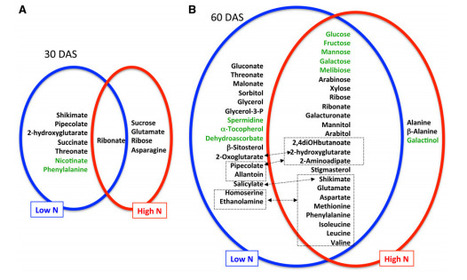



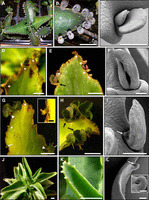
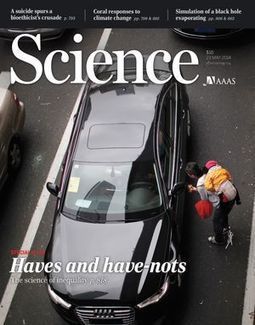





![[À écouter] Les OGM | SEED-DREAM Lab info | Scoop.it](https://img.scoop.it/sRNV9RhYnvKDmfYun37OXzl72eJkfbmt4t8yenImKBVvK0kTmF0xjctABnaLJIm9)
